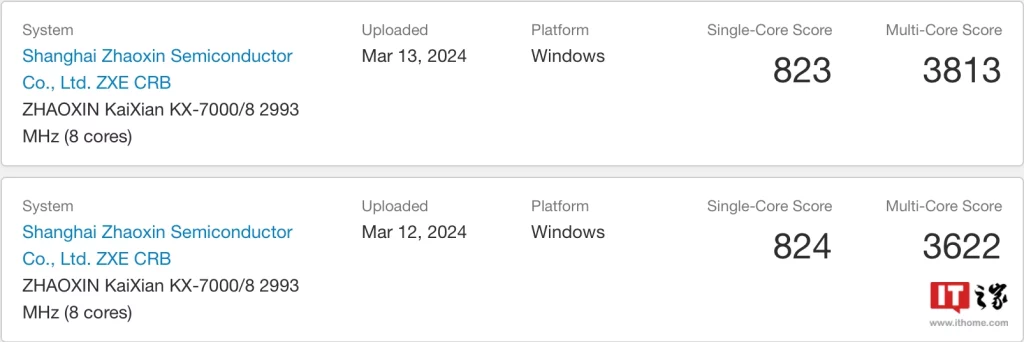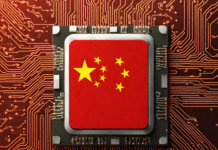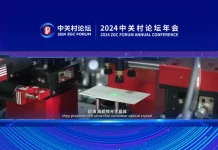While China is a global tech manufacturing leader, domestic processor development lags behind some competitors, particularly the US. However, China is actively closing the gap, with recent advancements like Zhaoxin’s 8-core Kaixian KX-7000 processor demonstrating progress. Here are the details…
Zhaoxin KX-7000 Benchmarks Reveal Performance Boost for Chinese Processor
It has been eight years since Zhaoxin, a company focused on developing domestic X86 processors, introduced its first product, the ZX-C+. The company’s greatest success has been its continued hard work since that time, refusing to rest on its laurels. These efforts have apparently paid off. The domestically produced Zhaoxin KX-7000 processor appeared on Geekbench, demonstrating twice the performance of its predecessor, the KX-U6780A.

In the Geekbench 6 test, the Zhaoxin Kaixian KX-7000 scored 824 in single-core and 3813 in multi-core performance. According to the test details, the KX-7000 processor utilizes the KX700M motherboard and features an 8-core design. It has a base frequency of 2.99GHz, 4MB of L2 cache, and 32MB of L3 cache. The test was conducted on Windows 11 Pro in balanced power mode, and the processor reached a maximum operating frequency of 3293MHz.
At first glance, the processor’s score might seem comparable to an 8th-generation i5, which could appear underwhelming. Especially considering Intel’s release of 8th-generation processors in August 2017. However, remember that Intel debuted its first processor in 1971, while Zhaoxin began in 2013. In this context, a seven-year difference highlights substantial progress.
Geekbench 6 scores on the Linux system show the previous-generation KX-U6780A processor achieved a single-core score of 344 and a multi-core score of 1873. The new KX-7000 offers 2.4 times the single-core performance and double the multi-core performance. Zhaoxin attributes this to the KX-7000’s “Century Avenue” microarchitecture and improved Chiplet design. The KX-7000 also features faster graphics and upgraded I/O interfaces like DDR5, PCIe 4.0, and USB4. Still, the company has a long way to go
RELATED:
- Xiaomi Band 8 Genshin Impact custom edion get a huge discount.
- Unlock Savings: Discount on Every Giztop Product under the New Year Sale
- Big Discount: AOOSTAR R1 N100 NAS Mini PC Only For $159
- How to add/remove someone in a WhatsApp group (with screenshots)







